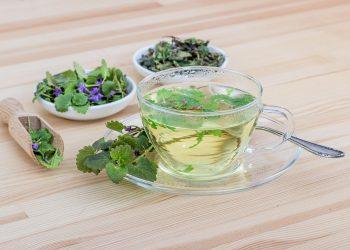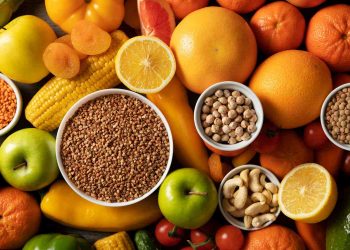Essential fatty acids are not just another health trend; they’re the unsung heroes of your overall well-being. These vital nutrients play a crucial role in your body, influencing everything from your mood to your heart health. Understanding these fatty acids and how they work can transform your health and elevate your life.
Contents
- What Are Essential Fatty Acids?
- 1. Alpha-Linolenic Acid (ALA)
- 2. Eicosapentaenoic Acid (EPA)
- 3. Docosahexaenoic Acid (DHA)
- 4. Linoleic Acid (LA)
- 5. Arachidonic Acid (AA)
- 6. Gamma-Linolenic Acid (GLA)
- 7. Stearidonic Acid (SDA)
- The Right Balance Matters
- Practical Tips for Integrating Essential Fatty Acids
- The Benefits of Essential Fatty Acids
- Bottom Line
What Are Essential Fatty Acids?
Essential fatty acids (EFAs) are types of polyunsaturated fats your body cannot produce on its own. You need to get them through your diet. There are two main types: Omega-3 and Omega-6 fatty acids. While both are essential, the balance between them is key. Too much Omega-6 and not enough Omega-3 can lead to a variety of health issues.
Why does this matter to you? Because your body relies on these fatty acids to function optimally. They support cell structure, reduce inflammation, and even contribute to brain health. Let’s dive into the seven essential fatty acids you should know about.
1. Alpha-Linolenic Acid (ALA)
What It Is
Alpha-Linolenic Acid is a plant-based Omega-3 fatty acid. It’s primarily found in flaxseeds, chia seeds, and walnuts.
Why You Need It
Your body converts ALA into EPA and DHA, the two other forms of Omega-3s that are more potent. ALA is essential for heart health, reducing bad cholesterol levels, and promoting good circulation.
How to Incorporate It
- Add flaxseed oil or chia seeds to your smoothies.
- Snack on walnuts or toss them into your salads.
- Opt for hemp oil in your salad dressings.
2. Eicosapentaenoic Acid (EPA)
What It Is
Eicosapentaenoic Acid is another Omega-3 fatty acid often derived from marine sources like fatty fish.
Why You Need It
EPA plays a significant role in reducing inflammation and is linked to heart health. It’s also beneficial for mental health, with studies showing its potential to alleviate symptoms of depression.
How to Incorporate It
- Include salmon, mackerel, or sardines in your diet at least twice a week.
- Consider a high-quality fish oil supplement if you’re not a fan of fish.
3. Docosahexaenoic Acid (DHA)
What It Is
Docosahexaenoic Acid is another Omega-3 fatty acid primarily found in fish and algae.
Why You Need It
DHA is a major component of your brain and retina. It supports cognitive function and visual health. It’s crucial for pregnant women, as it contributes to fetal brain development.
How to Incorporate It
- Choose algal oil supplements if you follow a vegan diet.
- Enjoy seafood like tuna or trout for a DHA boost.
4. Linoleic Acid (LA)
What It Is
Linoleic Acid is an Omega-6 fatty acid found in plant oils such as sunflower, safflower, and corn oil.
Why You Need It
LA is essential for skin health and contributes to the integrity of cell membranes. It also plays a role in hormone production.
How to Incorporate It
- Use sunflower oil or safflower oil in cooking.
- Snack on nuts like peanuts and pistachios.
5. Arachidonic Acid (AA)
What It Is
Arachidonic Acid is another Omega-6 fatty acid that your body can synthesize from LA.
Why You Need It
AA is vital for muscle growth and repair, making it a favorite among athletes. It also helps with inflammation processes.
How to Incorporate It
- Consume meat and eggs, as they are great sources.
- Include grass-fed options for higher quality AA.
6. Gamma-Linolenic Acid (GLA)
What It Is
Gamma-Linolenic Acid is an Omega-6 fatty acid found in evening primrose oil, borage oil, and black currant seed oil.
Why You Need It
GLA has anti-inflammatory properties and can help alleviate symptoms of conditions like eczema and arthritis. It also supports hormonal balance.
How to Incorporate It
- Consider evening primrose oil supplements.
- Use borage oil in your cooking or as a supplement.
7. Stearidonic Acid (SDA)
What It Is
Stearidonic Acid is a lesser-known Omega-3 fatty acid derived from certain plant oils and fish.
Why You Need It
SDA is important for heart health and can improve the conversion of ALA into EPA and DHA.
How to Incorporate It
- Look for hemp seed oil and perilla oil.
- Include sardines for a tasty source.
The Right Balance Matters
While both Omega-3 and Omega-6 fatty acids are essential, the typical modern diet often skews heavily towards Omega-6. This imbalance could lead to inflammation, heart disease, and other health issues. Strive for a balanced intake of these fatty acids by incorporating more Omega-3 rich foods into your meals.
Practical Tips for Integrating Essential Fatty Acids
- Meal Prep: Make a weekly plan that includes fatty fish or plant-based sources of Omega-3.
- Snack Smart: Choose snacks rich in ALA like chia pudding or trail mix with walnuts.
- Read Labels: Look for oils that are high in Omega-3s and low in Omega-6s when purchasing packaged products.
The Benefits of Essential Fatty Acids
Integrating these essential fatty acids into your diet can lead to:
- Improved heart health
- Enhanced cognitive function
- Better skin health
- Reduced inflammation
It’s time to take your health into your own hands. Start small, and incorporate these fats into your daily routine. The benefits will be worth the effort.
Bottom Line
Understanding and incorporating essential fatty acids into your diet is not just a fad; it’s a step toward optimal health. From heart health to brain function and beyond, these fatty acids are crucial players in your overall well-being.
Take action today! Look for ways to add these healthy fats to your meals, and you’ll be one step closer to a healthier, happier you.
FAQ
1. How can I tell if I’m getting enough essential fatty acids?
Look for signs like dry skin, fatigue, or mood swings. If you’re concerned, consult a healthcare provider for personalized advice.
2. Can I get enough EFAs from a plant-based diet?
Absolutely! Focus on flaxseeds, chia seeds, walnuts, and algae-based supplements for Omega-3s.
3. What’s the best way to cook with oils high in EFAs?
Use them in dressings or for low-heat cooking to preserve their nutritional integrity.
By understanding the significance of these essential fatty acids, you can make informed choices that will lead to a healthier, more vibrant life.
Get Your FREE Natural Health Guide!
Subscribe now and receive our exclusive ebook packed with natural health tips, practical wellness advice, and easy lifestyle changes — delivered straight to your inbox.















